
Please use this identifier to cite or link to this item:
https://hdl.handle.net/20.500.14301/128| Title: | TEACHER LEADERSHIP IN EDUCATION POLICIES OF NEPAL: AN INTERPRETIVE POLICY ANALYSIS |
| Authors: | Lamsal, Basant |
| Citation: | Lamsal.B (2021).Teacher leadership in education policies of Nepal: An interpretive policy analysis. |
| Issue Date: | Jul-2021 |
| Publisher: | School of Education |
| School: | SOED |
| Department: | DOEL |
| Level: | M.Phil. |
| Program: | M.Ed. in Leadership and Management (Two Year Program) |
| Abstract: | Teacher leadership has been a fascinating idea for me and so I have been engaged in the studies of literature on this topic. An encounter with the SSDP brought to my attention the issue that teachers in government schools do not perform their duties well. They are "insufficiently prepared‖ and thus are one of the major reasons for the poor learning outcomes of the students (MoE, 2016, p. 7). But at the same time, the SSDP also emphasizes that accommodation of the decentralization of the education system under the federal system is impossible without a strong ownership of SSDP‘s programme by teacher professional organizations (MoE, 2016). This situation again reminded me that it is a call for teacher leadership since teacher leadership is concerned with improving student learning outcomes. Then I got a question on my mind how can teacher leadership be ensured in government schools of Nepal? I learnt that teacher leadership can become successful ―on a systemic level‖ only when education policies ―intentionally‖ foster it and help ―prepare both teachers and principals for their new roles‖; and this happens only when policymakers are mindful of teacher leadership and craft policies keeping in view the II benefit it brings to the profession as well as its challenges (ASCD, 2015, p. 27). This strongly instigated me to find researches in Nepal on the topic of teacher leadership. I came across one that claimed that policies do contain clear information regarding leadership roles for community school teachers and leaders (Kafle, 2013, p. 58). At this point I strongly felt that a research into the education policies of Nepal was necessary to further investigate the claim made by Kafle (2013) and I undertook this research. This study aimed at looking deeper into the education policies of Nepal to find teacher leadership. Through an interpretive policy analysis with the use of content analysis and documentary analysis methods this research was carried out on the legally binding educational policies guiding the education scenario at present, namely the Education Act, 2028; the Teacher Service Commission Rule, 2057; and the Education Regulation, 2059 as well as the teacher preparation courses offered by TU and KU in B. Ed. and M. Ed. courses. Transformational leadership theory lent the theoretical lens for the research as a theory that advocates for transformation of followers into leaders, and the Teacher Leader Model Standards (TLEC, 2011) document enabled me to develop six categories to identify and interpret the data from the selected documents. I performed a deductive content analysis in which the categories for analysis of text are predetermined (Mayring, 2014). The categories were: i) Teacher Leader as a Collaborator; ii) Teacher Leader as a Researcher; iii) Teacher Leader as an Eternal Learner and Mentor; iv) Teacher Leader as an Investigator; v) Teacher Leader as a Leader in the Community; and vi) Teacher Leader as an Advocate. These nominal or qualitative categories helped me throughout the data generation as well as analysis and interpretation and illuminated to me that the III aforementioned policy documents as well as the courses offered by TU and KU do carry teacher leadership in them in the above six domains. This study has been significant to me as it has illuminated to me that teacher leadership is really necessary to uplift the present education scenario of Nepal, especially the education in government schools, and it needs to be enhanced through continuous growth and professional development of aspiring as well as already in service teachers. Therefore I concluded that there is vision of teacher leadership in education policies of Nepal. I also recommended that further research can be carried out into the issue of how to develop structures of support systems that can further enhance the capacities of teachers in the Nepal of 21st century. |
| URI: | http://101.251.6.110:8080/handle/20.500.14301/128 |
| Appears in Collections: | Dissertation |
Files in This Item:
| File | Description | Size | Format | |
|---|---|---|---|---|
| MPhil_Basant Lamsal (1).pdf | 1.48 MB | Adobe PDF | 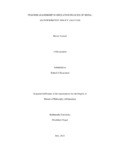 View/Open | |
| 20230201_105430.jpg | 389.05 kB | JPEG | 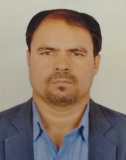 View/Open | |
| OPENING TIME.docx | 11.43 kB | Microsoft Word XML | View/Open | |
| MSD_Bineeta Baral.doc | 5.71 MB | Microsoft Word | View/Open | |
| MTVET 2022 Batch Lists.docx | 14.86 kB | Microsoft Word XML | View/Open | |
| invoice2022-23Kused.pdf | 112.55 kB | Adobe PDF |  View/Open | |
| invoice2022-23Kused (1).pdf | 112.55 kB | Adobe PDF |  View/Open | |
| invoice2022-23Kused (1) (1).pdf | 112.55 kB | Adobe PDF |  View/Open | |
| M.Ed._Math_Phurba Tamang.pdf | 1.1 MB | Adobe PDF | 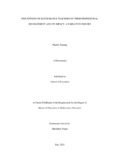 View/Open | |
| MPhil_Basant Lamsal.pdf | 1.48 MB | Adobe PDF | 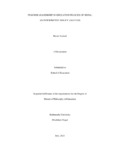 View/Open | |
| MPhil_Dev_Hari Prasad Pandey.pdf | 30.94 kB | Adobe PDF | 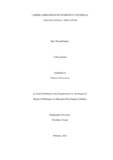 View/Open | |
| MSD_Bineeta Baral.pdf | 3.05 MB | Adobe PDF | 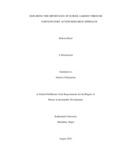 View/Open | |
| MTVET_cosmo_zinsou_odjo.pdf | 1.43 MB | Adobe PDF | 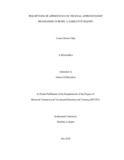 View/Open | |
| 20230102_154121.heic | 1.15 MB | Unknown | View/Open | |
| 20230102_154128.heic | 1.08 MB | Unknown | View/Open | |
| 20230102_154311.heic | 1.02 MB | Unknown | View/Open | |
| 20230102_154203.heic | 1.63 MB | Unknown | View/Open | |
| MPhil_Basant Lamsal (1).pdf | 1.48 MB | Adobe PDF |  View/Open |
Items in DSpace are protected by copyright, with all rights reserved, unless otherwise indicated.